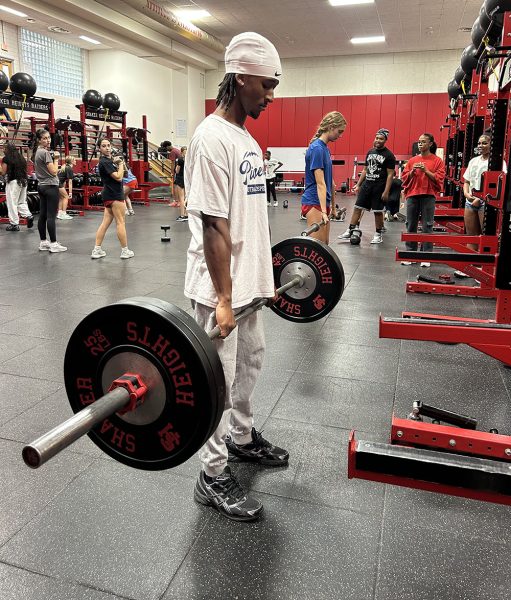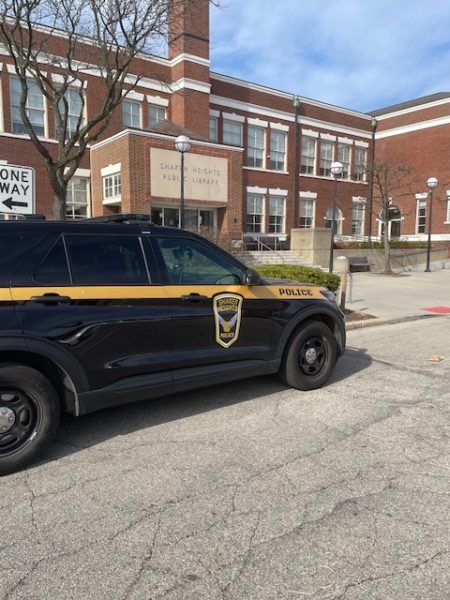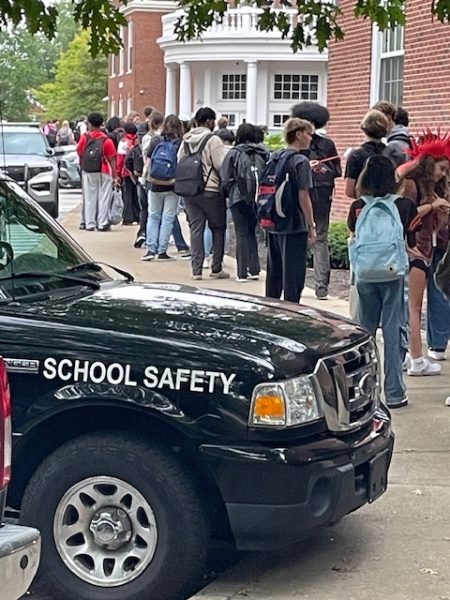‘Rite Idea: How Much is Too Much?
Kuehnle has communicated often, but not always effectively
Being a community leader in Shaker Heights is difficult, there’s no doubt about it. Shaker residents actively critique their leaders, particularly when it comes to communication.
If there’s one aspect of Jonathan Kuehnle’s first year as principal of the high school that is notable, it is increased connection and communication.
Kuehnle has made an effort to effectively and consistently interact with students, parents and teachers in light of last year’s communication disasters perpetrated by the administration, such as the cryptic P.A. announcement instructing teachers to check their email while anxious students mined social media for information about a threat of violence, and the robocall disaster that told every parent that his or her child had been suspended.
Kuehnle is often seen by students in the front hallways, greeting them excitedly, and in the stands during football, hockey and basketball games. Such visibility and interaction are minimal expectations for any principal.
Beyond that, his Twitter account, @ShakerPrincipal, has enabled another kind of visibility and means of connection. He retweets Shaker sports scores, features photos of students performing and offers information about testing. Once, when he inaccurately congratulated the hockey team on a victory, a team member tweeted back, “No we lost.”
It is evident that Kuehnle has made an effort to connect with students through social media, which is students’ most relied upon information source.
In terms of communicating with parents, Kuehnle’s weekly robocalls, which ring every Sunday night, aim to provide regular updates to families.
However, there is a fine line between necessity and excess when it comes to communication with parents.
An October robocall informed parents that “One of the traits of the International Baccalaureate Learner Profile is ‘Caring,’ which means our students learn to show sensitivity toward the needs and feelings of others.”
“At present, we have several students attending school who are attempting to navigate our halls while on crutches. Please remind your child to exhibit the trait of ‘Caring’ by showing common courtesy to their injured classmates, and providing a little extra space or assistance as needed.”
Rather than interrupting Sunday night dinner to explain that students have knee injuries, which is always the case throughout a school year, Kuehnle should compose robocalls that convey only necessary or pressing information, such as upcoming testing dates or a delayed start schedule. Overdoing the robocall scripts tempts parents to ignore the weekly instance of every phone in the house ringing at 7 p.m.
However, students’ most frequent contact with Kuehnle came via P.A. announcements. In these, his tone, while personable, at times lacked the authority necessary to govern 1,800 high school students.
He often began serious announcements about rules, for example, with lighthearted efforts at humor, then shifted to a more serious voice to deliver the message. In a high school where persuading students that school policies are legitimate, enforced and non-negotiable, and where relentless P.A. announcements can fall on deaf ears, such shifts in a principal’s tone are not advisable.
Aside from this, Kuehnle’s initiatives and policy changes have been generally commendable. His efforts to use data to raise student achievement, his creation of the Student Leadership Team and his decision to use Breathalyzers at a school dance to ensure student safety are among these.
It is incredibly difficult to measure Kuehnle’s performance as a principal while simply considering his first year. Still, he has shown his ability to increase communication and collaboration, and his efforts to interact with the community are appreciated.
Next year, we hope to see this communication continue, perhaps in a more concise and consistently professional manner.






